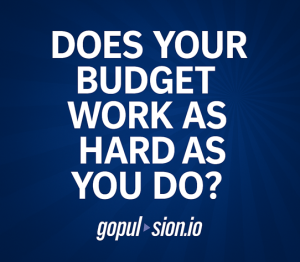 It’s budget season, and for mid-market CEOs, CMOs, and CROs, that means evaluating what’s worked, what hasn’t, and where to double down in 2026. Let’s face it, every marketing dollar must now defend its position. The digital landscape is maturing, AI is reshaping discovery, and your buyers expect smarter engagement.
It’s budget season, and for mid-market CEOs, CMOs, and CROs, that means evaluating what’s worked, what hasn’t, and where to double down in 2026. Let’s face it, every marketing dollar must now defend its position. The digital landscape is maturing, AI is reshaping discovery, and your buyers expect smarter engagement.
Here’s how to build a 2026 digital marketing strategy that wins, without the fluff.
- Google is Still King
Despite the rise of AI tools and new social platforms, Google remains the center of the buyer journey. From Search Ads to Maps to YouTube, Google continues to influence both B2B and B2C decision-making.
You’re not just bidding on keywords anymore. You’re investing in visibility across intent-driven properties. Google Ads must now be paired with strong SEO and Maps optimization. Your business needs to be present in multiple formats, especially where Google is auto-generating AI-powered summaries (SGE).
Want to own the answer box? Then you need AEO bringing us to #2.
- AEO (Answer Engine Optimization) Drives Business Like SEO
Search behaviour is evolving. With AI-generated summaries and voice search interfaces, people are looking for direct answers, fast.
AEO means:
- Structuring content with clear, authoritative answers.
- Using schema markup (FAQ, How-To, Review) to help engines understand your content.
- Prioritizing mobile-first, lightning-fast UX.
If you’re not prepared for how tools like Google’s SGE or ChatGPT will serve answers in 2026, your traffic will stall. We’ve already helped companies rebuild content for GTP-style parsing. The results? Higher CTRs, better engagement, and rankings in featured answer positions.
- Social: Cut the Fluff, Focus the Fire
Let’s talk about the platforms. Everyone’s having fun on TikTok, but fun doesn’t always mean ROI. For B2B? It’s likely a distraction.
Instead, hyper-focus your budget where it aligns with intent:
- B2B: LinkedIn (outreach, content, ads, groups)
- B2C: Meta (Facebook/Instagram), especially with retargeting
- Niche eCommerce: Pinterest and YouTube Shorts
Your social budget should support funnel-specific actions, not vanity metrics.
- LinkedIn is Mandatory for B2B
It’s not optional. For B2B in 2026, LinkedIn is the channel. It’s where buyers go to vet companies, explore trends, and get educated.
Your strategy should include:
- A professionally branded company page
- Key team members with optimized, credible profiles
- Thought leadership via LinkedIn Pulse
- Strategic group engagement
- Direct outreach (yes, it still works if you do it right)
Clients using our LinkedIn programs have seen 10X ROI compared to cold outbound email. Why? Because it’s personal, peer-level, and earns trust fast.
- Build Agility into Your Budget
AI is moving at warp speed. Consumer preferences shift in months, not years. Economic variables (like inflation or platform policy changes) demand marketers stay agile.
Allocate a portion of your budget to rapid testing:
- Try new placements (YouTube Shorts, TikTok Ads)
- Test content formats (carousels, live Q&As, voice snippets)
- Respond to trend shifts with short-turn SEO content
An agile budget doesn’t mean scattered. It means prepared.
Final Thoughts
2026 isn’t the year for bloated campaigns or nice-to-have strategies. Every move must be data-driven, channel-focused, and prepared for AI disruption.
Smart 2026 strategies will:
- Prioritize Google and AEO to capture intent
- Refocus social spend to platforms that convert
- Treat LinkedIn as a sales channel
- Allocate budget to stay agile and competitive
Need help developing your strategy or validating your current approach? Let’s build a data-backed plan that delivers ROI.
Visit www.gopulsion.io to get started.